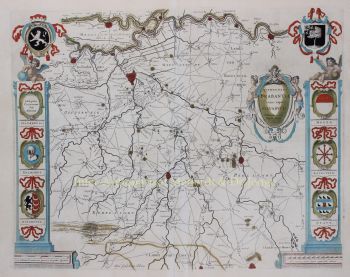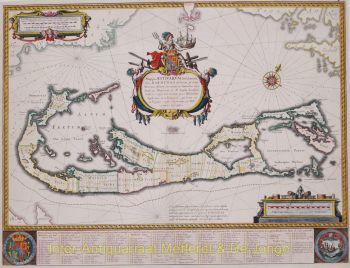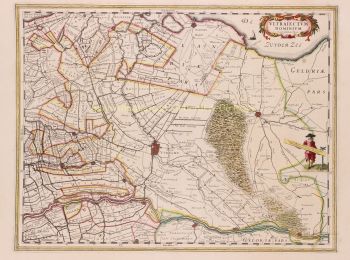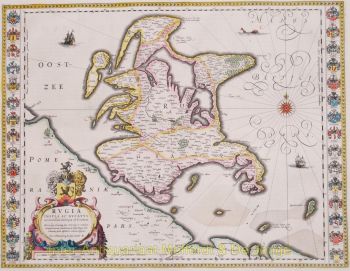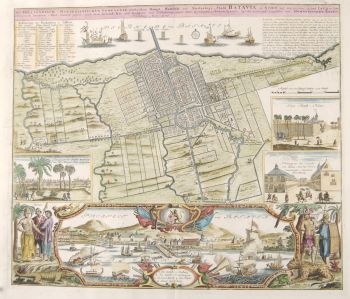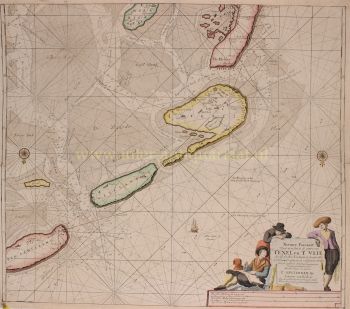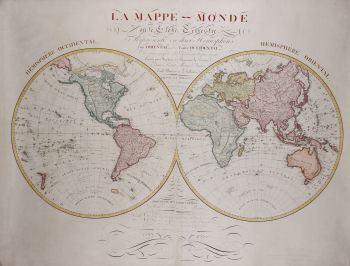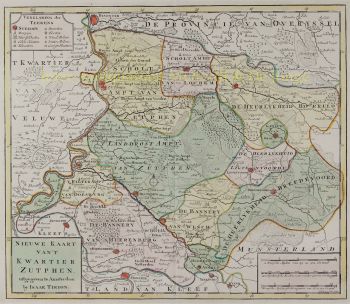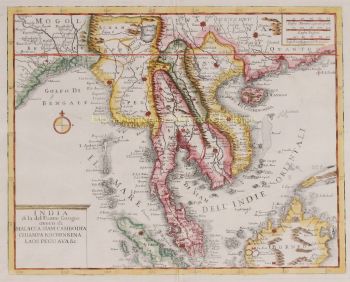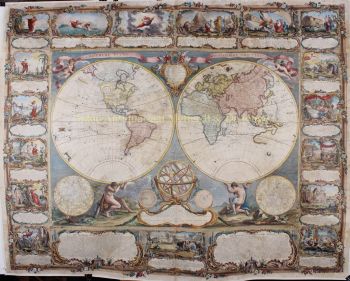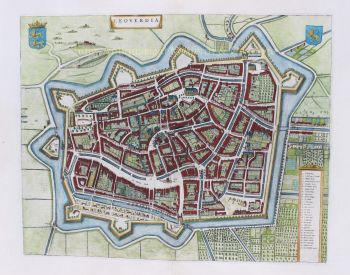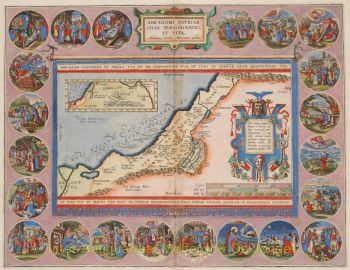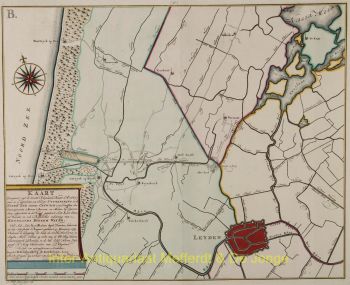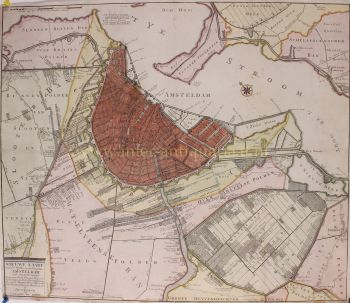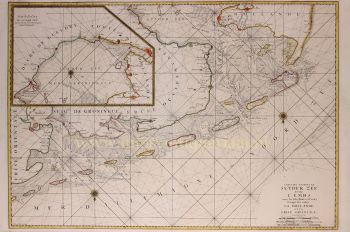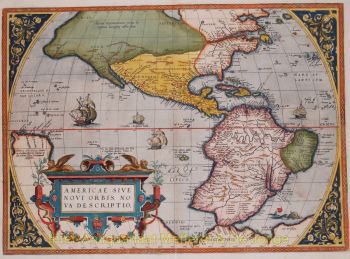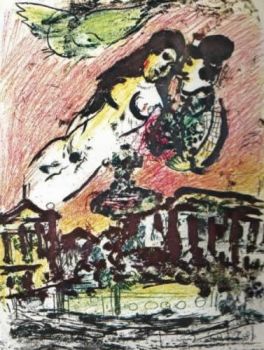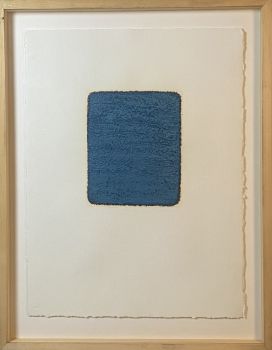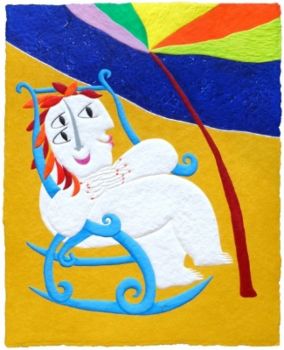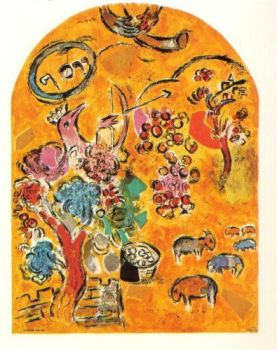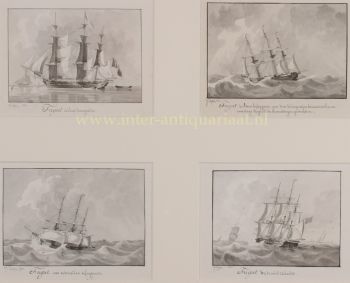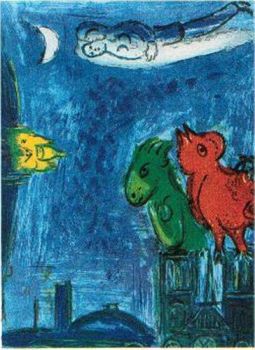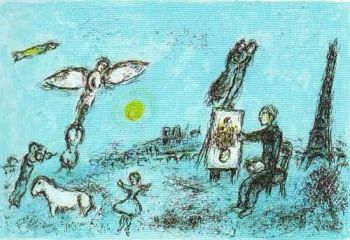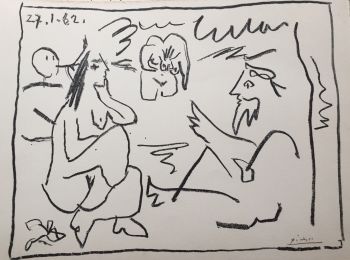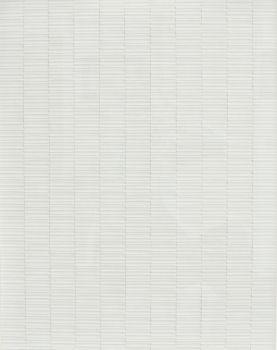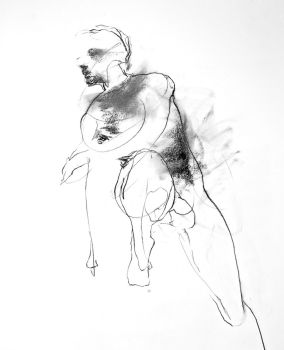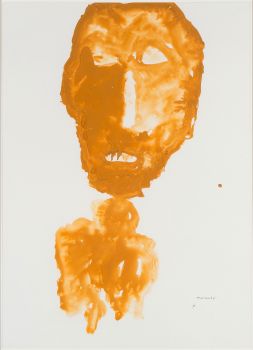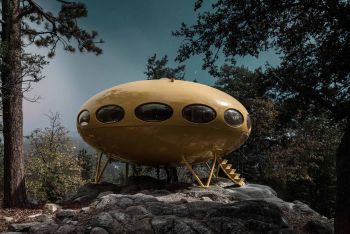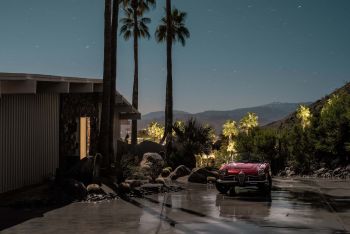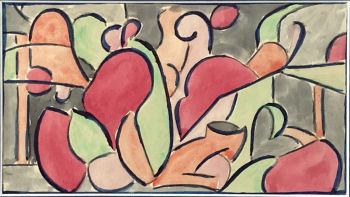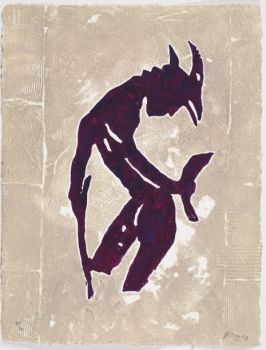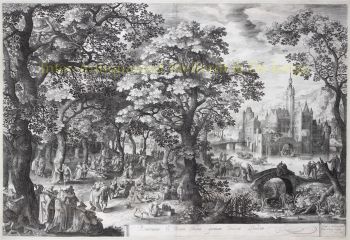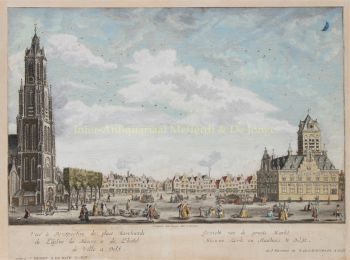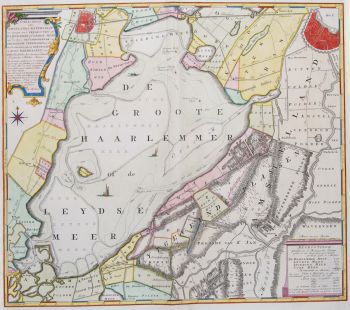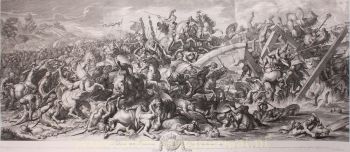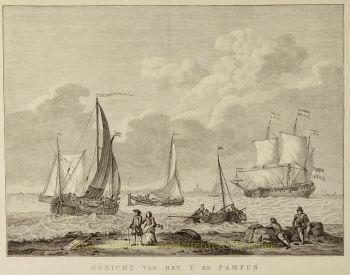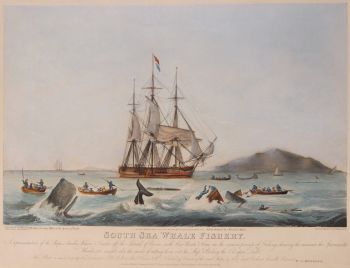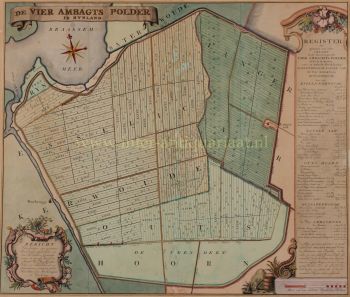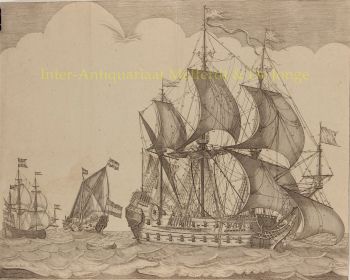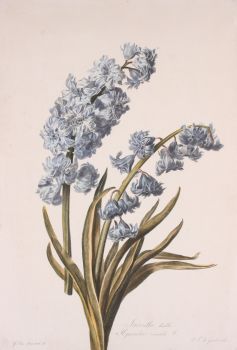World map 1606
Willem Janszoon Blaeu
InktPapierAfdrukken
41 ⨯ 55 cm
€ 11.500
Inter-Antiquariaat Mefferdt & De Jonge
- Over kunstwerkICONIC WORLD MAP BY WILLEM BLAEU "Nova Totius Terrarum Orbis Geographica Ac Hydrographica Tabula" copper engraving first published in 1606 by Willem Blaeu in Amsterdam. Coloured by a later hand. Size: 55 x 41 cm. Nice example of Blaeu's classic world map in the so-called Mercator projection. This is one of the most famous landmarks of 17th-century cartography. Engraved and signed by Joshua van den Ende, reduced from Blaeu's wall map of 1605, it first appeared as a separate publication in 1606. In 1630 it was incorporated into Willem Blaeu's "Atlantis Appendix" and then into the "Atlas Novus" in all subsequent editions until 1658. Its influence was enormous, and it was closely copied by some of the greatest Dutch cartographers, such as Pieter van der Keere and Johannes Janssonius. Others, such as the house of Hondius, were forced to produce their own highly decorative maps to compete. Geographically, the map was a reduction of Blaeu's large map of the world published in 1605. The charming cartouche in the interior of North America mentions its discovery by Columbus in 1492 and being named after Amerigo Vespucci in 1499. There is some confusion in the depiction of the landmass of the East coast of the United States, probably as a result of Indian reports of large bodies of water inland, almost certainly the Great Lakes. California is correctly shown as a peninsula. The Le Maire straits, separating Tierra del Fuego from South America, copied from an earlier map by Hondius, are clearly shown. In the north, a note beside "Nova Zembla" in the Arctic declares that it was reached by Willem Barentsz in 1596. In the Far East Korea is shown as an island and northern Australia is shown without any place names. Decoratively the most striking features of this map are the magnificent and innovative panelled borders. The upper border shows allegorical figures of the sun and moon and the five known planets; Mercury, Venus, Mars, Jupiter and Saturn. Along the bottom border are depictions of the seven wonders of the ancient world; the Hanging Gardens of Babylon, the Colossus of Rhodes, the Great Pyramid at Giza, the Mausoleum at Hallicarnassus, the Temple of Artemis at Ephesus, the Statue of Zeus at Olympia and the Lighthouse of Alexandria. Running down the left hand side of the map are representations of the four elements (Fire, Air, Water and Earth) and on the right, the Four Seasons. In the cartouche in the lower right Blaeu dedicated the map to Cornelis Hooft, the Dutch merchant and Amsterdam regent during the Golden Age. . Reference : Rodney Shirley "The Mapping of the World', no. 255 Price: Euro 11.500,-
- Over kunstenaar
"Willem Janszoon Blaeu en zijn zoon Joan belichaamden de 'gouden eeuw' van de Nederlandse cartografie. Tijdens zijn werk in de zeventiende eeuw tekende Willem Blaeu een aantal baanbrekende kaarten en publiceerde hij de eerste atlas.
Hij werd in 1571 in Amsterdam geboren en werkte aanvankelijk als klerk in de familieharinghandel. Hij was echter niet gelukkig met zijn beroep en verliet het huis in 1594 om wiskunde te studeren bij Tycho Brahe, de beroemde astronoom. Blaeu was een goede leerling die veel indruk maakte op zijn leermeester, en toen zijn studie was afgerond keerde hij terug naar Amsterdam en vestigde zich als kaartenmaker. Zijn bedrijf floreerde en zijn reputatie groeide. Hij was de eerste kaartenmaker die losse kaarten van veel Europese landen produceerde.
In 1605 maakte hij een wandkaart van de wereld, bestaande uit 20 bladen, elk 8 voet breed. Deze kaart was verreweg de meest nauwkeurige van die periode en leverde een uitstekende bijdrage aan de kennis van de wereldgeografie.
Zijn kaart bleef de meest nauwkeurige tot 1648, toen zijn zoon, Joan, die ook een beroemde kaartenmaker werd, hem bijwerkte. Maar zijn grootste prestatie was de productie van de eerste atlas in 1630. De naam Blaeu was eigenlijk een familiebijnaam die Willem aannam nadat er verwarring was ontstaan tussen hemzelf en zijn grote rivaal Joannes Jansonius.'
Bent u geïnteresseerd om dit kunstwerk te kopen?
Artwork details
Related artworks
- 1 - 4 / 8
- 1 - 4 / 24
Onbekende Kunstenaar
A SMALL IVORY NETSUKE OF A DUTCHMAN WITH A DRUM1750 - 1800
Prijs op aanvraagZebregs & Röell - Fine Art - Antiques
Onbekende Kunstenaar
AN UNUSUAL INDONESIAN LOBBED SILVER DISHlate 17th
Prijs op aanvraagZebregs & Röell - Fine Art - Antiques
Onbekende Kunstenaar
Dutchmen in miniature (Netsuke)1700 - 1900
Prijs op aanvraagZebregs & Röell - Fine Art - Antiques
Onbekende Kunstenaar
AN IVORY NETSUKE OF A DUTCHMAN FROLICKING WITH A SMALL BOY18th century
Prijs op aanvraagZebregs & Röell - Fine Art - Antiques
Onbekende Kunstenaar
A silver spoon commemorating Juff’ Margareta van Hoorn1656 - 1694
Prijs op aanvraagZebregs & Röell - Fine Art - Antiques
Onbekende Kunstenaar
Japanese transition-style lacquer coffer 1640 - 1650
Prijs op aanvraagZebregs & Röell - Fine Art - Antiques
1 - 4 / 24- 1 - 4 / 24
- 1 - 4 / 12



